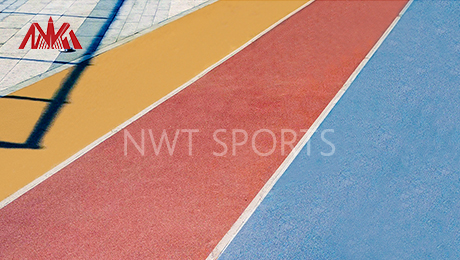In modern sports facility design, the choice of track surface colors is not merely for aesthetic appeal but plays a crucial role in influencing athletes' performance and well-being. This article explores how track colors impact athletes from the perspectives of visibility, stress response, and emotional effects.
1. The Effect of Colors on Visual Perception
Colors are a significant component of human visual perception, and for athletes, the color of a track surface can influence their field of vision and focus. For instance, darker track colors (such as purple or blue) may enhance contrast and improve athletes' ability to distinguish track boundaries. In contrast, brighter colors (such as red or yellow) may be more suitable for high-intensity sports by offering greater visibility under strong lighting conditions.
2. The Impact on Physical Stress and Performance
Different track surface colors also affect athletes' stress levels and performance. Research indicates that darker tracks may induce a sense of urgency, helping athletes maintain tension and high speeds, which is ideal for sprinting events. Conversely, brighter tracks can alleviate the sudden physical exertion required in certain sports, promoting better overall results in endurance-based activities.


3. The Psychological and Motivational Effects of Colors
Colors can significantly influence athletes' emotions and motivation. For example, red is often associated with energy and power, potentially enhancing an athlete’s sense of drive and accomplishment on a red track. On the other hand, blue is known for its calming and relaxing effects, making it more suitable for steady, sustained training or long-distance events. These psychological impacts can help athletes strike a balance between intensity and relaxation during competitions and practice sessions.
4. Vibrant and Durable Running Tracks
NWT Sports offers high-quality running tracks crafted from premium prefabricated rubber materials. These tracks are designed to provide exceptional durability, weather resistance, and safety. Available in a variety of colors, such as red, green, blue, and custom shades, they allow for creative designs that enhance the aesthetic appeal of sports facilities. The fade-resistant colors maintain their vibrancy even after extended exposure to sunlight and heavy use, ensuring a long-lasting, visually striking surface.
5. Safety and Performance Features
Engineered with a shock-absorbing base layer, NWT Sports’ running tracks minimize joint impact, making them suitable for athletes of all skill levels. The anti-slip surface delivers optimal traction, promoting safety during intense training and competitive events. Ideal for schools, stadiums, and recreational areas, these tracks cater to diverse athletic needs while meeting global standards. With a commitment to innovation and quality, NWT Sports combines functionality with style to elevate sports facilities.
Conclusion
The selection of track surface colors goes beyond mere engineering or design considerations. It profoundly affects athletes' performance and overall physical and mental health. In sports facility design and implementation, a comprehensive understanding of the effects of colors on visibility, physical stress, and emotional response is essential to maximize athletes' performance while minimizing adverse effects.
Post time: Dec-18-2024
